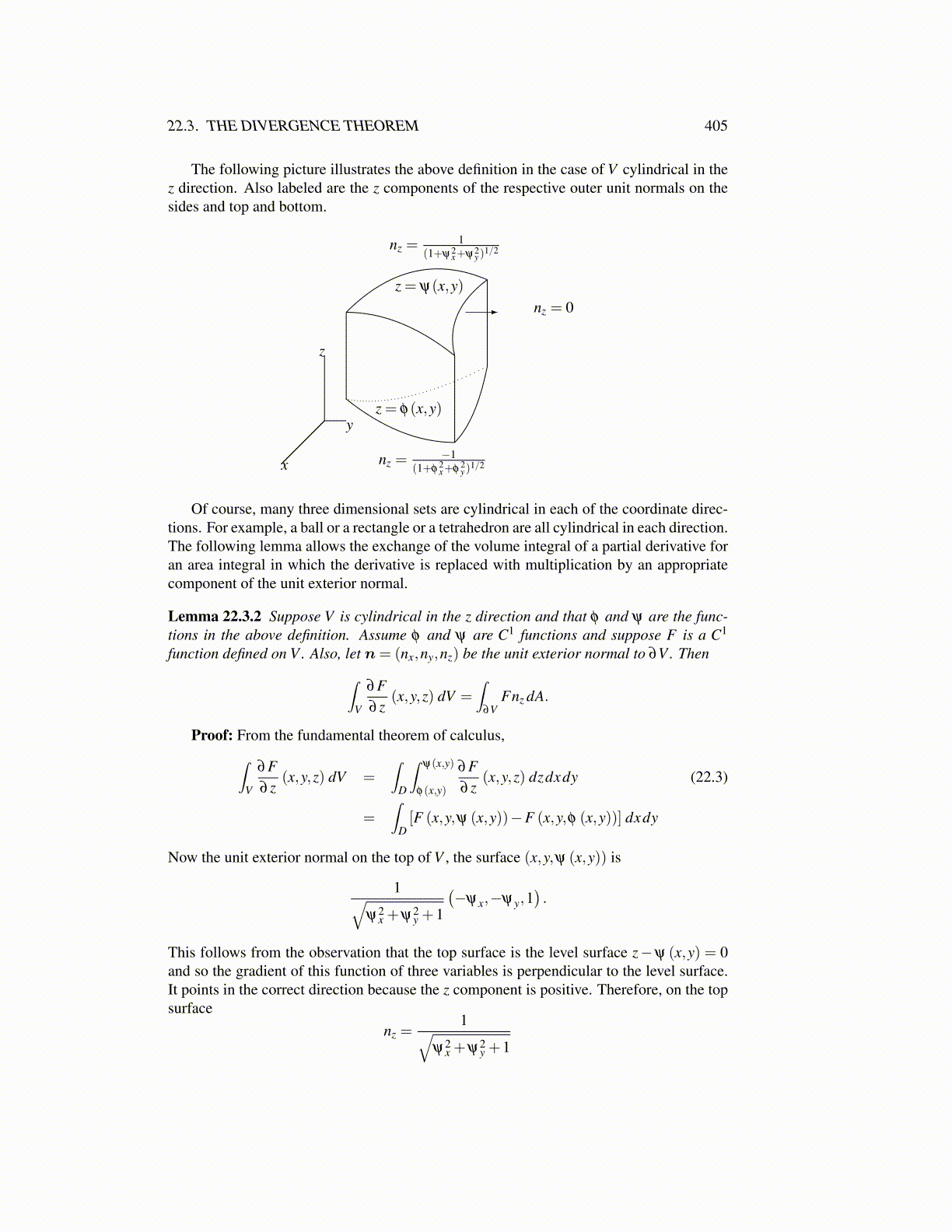
22.3. THE DIVERGENCE THEOREM 405
The following picture illustrates the above definition in the case of V cylindrical in thez direction. Also labeled are the z components of the respective outer unit normals on thesides and top and bottom.
z = ψ(x,y)
z = φ(x,y)
x
z
y
nz =1
(1+ψ2x+ψ2
y)1/2
nz =−1
(1+φ2x+φ2
y)1/2
nz = 0
Of course, many three dimensional sets are cylindrical in each of the coordinate direc-tions. For example, a ball or a rectangle or a tetrahedron are all cylindrical in each direction.The following lemma allows the exchange of the volume integral of a partial derivative foran area integral in which the derivative is replaced with multiplication by an appropriatecomponent of the unit exterior normal.
Lemma 22.3.2 Suppose V is cylindrical in the z direction and that φ and ψ are the func-tions in the above definition. Assume φ and ψ are C1 functions and suppose F is a C1
function defined on V . Also, let n= (nx,ny,nz) be the unit exterior normal to ∂V . Then∫V
∂F∂ z
(x,y,z) dV =∫
∂VFnz dA.
Proof: From the fundamental theorem of calculus,∫V
∂F∂ z
(x,y,z) dV =∫
D
∫ψ(x,y)
φ(x,y)
∂F∂ z
(x,y,z) dzdxdy (22.3)
=∫
D[F (x,y,ψ (x,y))−F (x,y,φ (x,y))] dxdy
Now the unit exterior normal on the top of V , the surface (x,y,ψ (x,y)) is
1√ψ2
x +ψ2y +1
(−ψx,−ψy,1
).
This follows from the observation that the top surface is the level surface z−ψ (x,y) = 0and so the gradient of this function of three variables is perpendicular to the level surface.It points in the correct direction because the z component is positive. Therefore, on the topsurface
nz =1√
ψ2x +ψ2
y +1